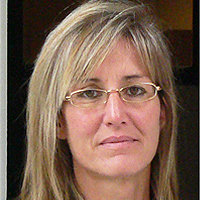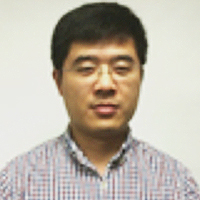Liver cyst infection in kidney transplant patient with autosomal dominant polycystic kidney disease: Interest of PET/CT in diagnosis and treatment
Published on: 14th December, 2018
OCLC Number/Unique Identifier: 7964794073
Liver cyst infection in patients with autosomal dominant polycystic kidney disease (ADPKD) is a rare but life-threatening complication. Diagnosis and treatment remain challenging. We report the case of a 64-year-old kidney transplant patient presenting with fever and abdominal pain. The diagnosis of liver cyst infection was made by positron emission tomography scan (PET/CT). Moreover, the course of our patient illustrates the interest of subsequent PET/CT during follow-up as our patient failed on antibiotherapy and required liver cyst drainage.
Urine Leak Following Kidney Transplantation: An Evidence-based Management Plan
Published on: 2nd October, 2018
OCLC Number/Unique Identifier: 7869210591
Care of kidney transplant recipient remains complex and long-term graft survival is not seen in every transplant recipient. Due to reduced supply and increased demand of human organs, more transplants are carried out using marginal grafts on emergency lists. Transplant recipients have altered physiology due to known end-stage renal disease, recent surgery and the use of potent analgesic and immunosuppressive medications. Amongst the known surgical complications, urine leak remains the most common. It can result from poor graft preparation due to excessive peri ureteric or lower pole dissection or damage to lower polar artery resulting in ischemic necrosis. In addition, poor surgical technique, bladder outflow obstruction, iatrogenic injury to bladder or renal pelvis may contribute to urine leak. Ongoing urine leak may manifest itself as swelling, pain, high drain output, sepsis, ileus and eventual graft loss. Early identification, localisation and quantification of leak remain essential in management of these patients. In addition, sepsis should be identified and treated promptly as these patients are highly susceptible to infections. Early recognition of this complication can significantly reduce hospital stay, improve quality of life and reduce graft loss and mortality. In this article, we aim to develop an evidence-based management approach to a patient with urine leak using a clinical scenario.
A case report of Hypocomplementemic urticarial vasculitic syndrome presenting with Renal failure
Published on: 12th September, 2018
OCLC Number/Unique Identifier: 7856112439
We present a case of hypocomplementemic urticarial vasculitic syndrome (HUVS) who developed severe renal failure requiring ICU-level care. Our patient is a 66-year-old man who presented with abdominal pain, rash, confusion, oliguria, and shortness of breath. He was found to be in acute renal failure with leukocytosis and elevated lactate. Work-up for infectious, autoimmune, and hematologic malignant diseases was negative. The presence of chronic urticaria, abdominal pain, hypocomplementemia, and leukocytoclastic vasculitis on skin biopsy confirmed the diagnosis of HUVS. He required hemodialysis for renal failure as well as gastrostomy tube placement for nutritional support secondary to the development of mucosal ulcers, a rare finding in HUVS. He recovered with several months of high-dose steroids and hemodialysis. This case highlights the effectiveness of steroids for initial treatment of HUVS, and the relapsing and remitting nature of the disease. Providers should also be aware of the broad range of presenting symptoms such as mucosal lesions that may require nutritional support. Interestingly, unlike many previously reported cases of HUVS, our patient had not yet developed signs and symptoms of systemic lupus erythematosus, which often overlaps with HUVS.
Transcriptional profile of bovine preimplantation development selected based on G6PDH activity
Published on: 8th April, 2021
OCLC Number/Unique Identifier: 9026744769
The oocyte is the female gamete that contributes not only half of the genetic material but also all of the cytoplasm to the zygote, supplying the transcripts, proteins, mitochondria and other components necessary for early embryonic development. The intrinsic oocyte quality is one of the main factors affecting the embryo yield, the implantation rate and the rate of healthy offspring. It is obvious that a fertilized oocyte must reach the blastocyst stage within 6–9 days in the proper culture conditions to have a significant chance of inducing a pregnancy and producing an offspring. The ability to sustain the first week of embryonic development is clearly influenced by the follicular status from which the oocyte is obtained indicating that this developmental potential is inherent within certain oocytes. Since most early embryos that do not reach the blastocyst stage are blocked at or close to the maternal to zygotic transition (MZT)-stage, which occurs at the eight-cell stage in cattle, one could speculate that incompetent oocytes fail to appropriately activate the embryonic genome. Oocyte selection based on glucose-6-phosphate dehydrogenase (G6PDH) activity has been successfully used to differentiate between competent and incompetent bovine oocytes. Recently, molecular regulation of genes regulating biological process of Brilliant Cresyl Blue staining (BCB) selected oocytes and embryos was investigated to explain their variation in quality and developmental potentiality. This short review will highlights some of these efforts that have been done in this interesting area of research.
Knowledge, attitude and motivation toward stem cell transplantation and donation among Saudi population in Riyadh: Are Saudi people aware enough about the importance of stem cell transplantation and donation?
Published on: 13th November, 2020
OCLC Number/Unique Identifier: 8873218106
Objectives: The aim of this study was to assess the knowledge, attitude and motivation toward stem cell donation among Saudi population in Riyadh, Saudi Arabia.
Methods: This is a cross-sectional study that was conducted at different malls in Riyadh. Selection of malls was done randomly according to the geographical distribution of Riyadh, in which sample size was calculated and distributed equally. The participants were asked to complete a questionnaire that addressed their knowledge, attitude and motivation toward stem cell transplantation and donation.
Results: Results of this study showed that population knowledge about stem cell transplantation and donation is considered to be low. Only (37.8%) has enough information about stem cell transplantation and donation. There is a positive correlation between level of education and participant’s knowledge regarding stem cell transplantation and donation. The study revealed that 39.3% of participants have willingness for stem cell donation.
Conclusion: It has been found that two third of population expressed lack of knowledge about stem cell transplantation and donation. Also, only 40% of participants showed willingness for donation, and the most common reason for not donating stem cell was the lack of information about stem cell and the value of donation While, increasing level of education was associated with better understanding of stem cell donation and its role in therapy and saving lives. Therefore, suitable campaign, advertising and counseling program for population is recommended to increase level of knowledge and motivation toward stem cell donation.
The rising role of mesenchymal stem cells in the treatment of COVID-19 infections
Published on: 7th July, 2020
OCLC Number/Unique Identifier: 8623431074
Infectious diseases are a leading cause of death worldwide [1,2]. The Mid-20th century witnessed most of the antimicrobial discoveries but recently there is dramatic shortage of new classes of antimicrobial agents due to failure to build a sustainable antimicrobial discovery platform [1-4]. For example, antibiotics comprise ˂ 1.5% of the compounds under investigation at the major pharmaceutical and biotechnology companies [1,5].
Neutrophils, NETs, NETosis and their paradoxical roles in COVID-19
Published on: 11th May, 2020
OCLC Number/Unique Identifier: 8592950514
The pandemic of COVID-19 has adversely affected the world in many aspects. The health and economic sectors suffer most of the repercussions of this disease. The search for a cure for this rapidly spreading virus which is causing massive life losses worldwide requires clear understanding of the immunopathogenesis of this virus so as to develop pinpointed targeted therapies rather than relying mainly on supportive care measures and drug repurposing to fight this life-threatening virus infection.
Neutrophils, neutrophil extracellular traps (NETs), and NETosis are not well studied not only in COVID-19, but also in coroviruses in general. The review will shed lights on the functions of neutrophils, NETs, and NETosis in various infectious complications as well as in sepsis and acute lung conditions in an attempt to understand their actual roles and in order to help in designing targeted therapies in the near future.
Autologous hematopoietic stem cell transplantation in systemic sclerosis patientss
Published on: 27th February, 2020
OCLC Number/Unique Identifier: 8541470024
ystemic sclerosis (SScl) is an autoimmune disorder of unknown aetiology, characterised by fibrosis and microvascular injury of the affected organs. The hallmark of the disease is thickening and tightness of the skin and the subcutaneous tissue. SScl can affect virtually any organ systems, most importantly the skin, blood vessels, lungs, kidneys, gastrointestinal tract, and the heart [1].
A review on the occurrence of opportunistic infections after applications of stem cell techniques
Published on: 18th December, 2019
OCLC Number/Unique Identifier: 8515595307
In recent years, stem cells technology have been used widely in basic and clinical science researches LIPUS (low-intensity pulsed ultrasound) is another technique commonly used in conjunction with stem cells that can have complications after applications. One of the important issues in using this modern technique is the occurrence of opportunistic infections and inflammatory reactions in the rejection or destruction of these cells and in turn making ineffective of its applications, which have been reviewed in the following.
Natural killer cells in patients with hematologic malignancies, solid tumors and in recipients of hematopoietic stem cell transplantation
Published on: 9th December, 2019
OCLC Number/Unique Identifier: 8440596237
Natural killer cells represent the first line of defense against infections and tumors and can be derived from various sources including: bone marrow, peripheral blood, specific types of human stem cells, and certain cell lines. The functions of natural killer cells are influenced by: several cytokines, activating and inhibitory receptors, as well as other immune cells such as dendritic cells and mesenchymal stem cells.
Natural killer cells are attractive candidates for adoptive cellular therapy in patients with hematologic malignancies and solid tumors in addition to recipients of various forms of hematopoietic stem cell transplantation as they enhance antitumor effects without causing graft versus host disease. Several clinical trials have shown safety and efficacy of natural killer cell products obtained from autologous as well as allogeneic sources and used in conjunction with cytotoxic chemotherapy, monoclonal antibodies and novel agents.
The following review, which includes extensive literature review on several aspects of natural killer cells, will give particular attention to: the rising role of natural killer cell therapies in patients with malignant hematological disorders, solid tumors and in recipients of stem cell therapies; preparation and manufacture of natural killer cell products; challenges facing the utilization of this form of cellular therapy including evolution of resistance; and maneuvers that can be employed to enhance the efficacy of natural killer cell therapies as well as suggested solutions to resolve the remaining challenges.




